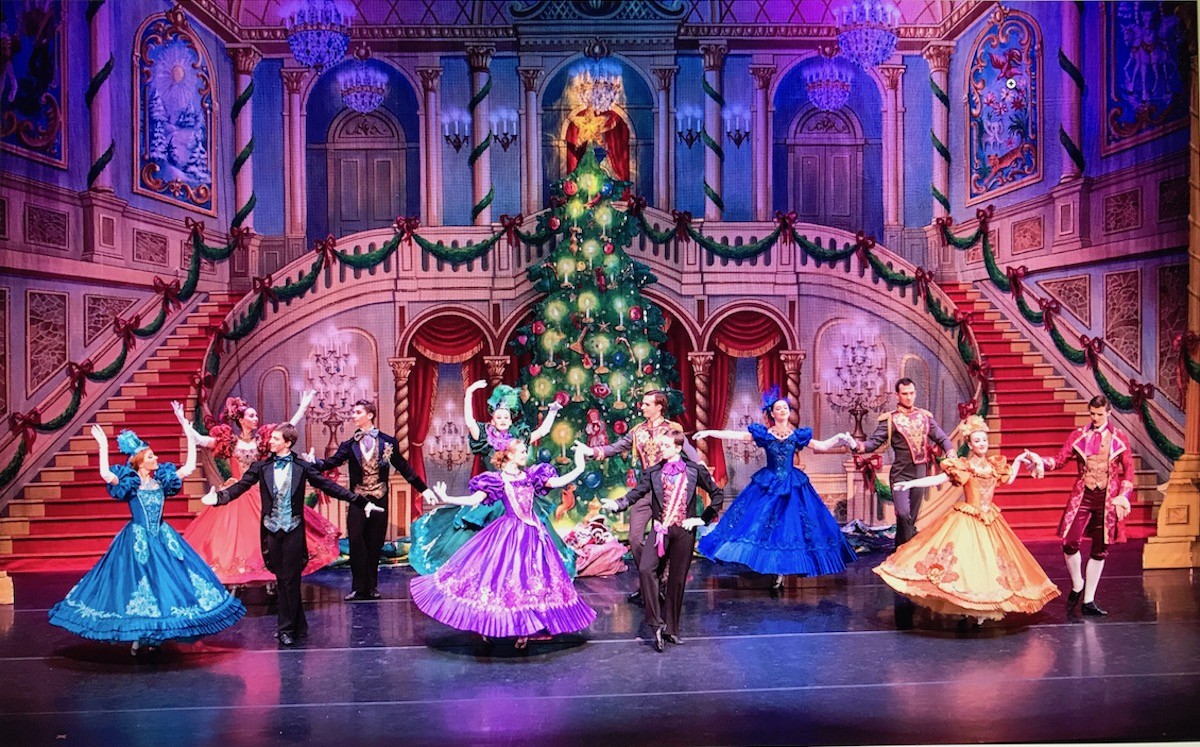The Moscow Ballet’s 25th anniversary edition of the Great Russian Nutcracker was performed to a near-capacity crowd, crammed with girls 6- to 10-years-old and their families, Tuesday night at the Tennessee Theatre.
Skillfully choreographed to an abbreviated version of Tchaikovsky’s ballet score for the Nutcracker, the performance fit into the 90-minute or so time-frame of children’s attention spans, to say nothing of their parents, who, like their kids, were probably attending their very first ballet.
They stayed in their seats, with their eyes glued to the stage. They loved what they saw, applauded at the appropriate places and cheered wildly when the dancing was deservedly exceptional.
The Moscow Ballet is expert at matching what has to take place on stage to the music accompanying it. Performing to canned music has both advantages and limitations. It saves the cost of hiring live musicians and the time to rehearse them. The company is often in and out of a city in two days for one-day runs. One day to load in the show and set things up. Perform the next, pack up and be on their way.
But the unforgiving tempo of the music also poses problems. There’s no conductor to adjust the rhythm if a dancer leaps a little higher, or not high enough to make the beat of the music. The driving pace also takes some of the visual poetry out of the original choreography that the music was designed to highlight.
On the other hand, by keeping the dancing close to the floor, there isn’t any time for young minds to get bored and lose attention. For people like me, most of the evening seemed rushed. But it was obviously just right for the target audience.
There were several genuinely beautiful moments. Some very unexpected. In Act II, the traditional Waltz of the Snowflakes, classically in pure white in falling snow, was transformed into a summer palace garden scene, with eight pairs of lovely pink gowns and uniforms.
The curtain rose on Act II to a breathtaking scene of the two principal dancers, Karyna Shatkovskaya, and her partner, Vladimir Tkachenko, entwined together in a Dove of Peace, with a gorgeous, wide pair of white wings.
When they separated, in a moment of sheer magic, Shatkovskaya was wearing the right wing, Tkachenko, the left one. It was poetic beauty that erased the memory of less than exceptional dancing the first act.
In the Arabian Variation, Aidana Amirkhhanova and Rafael Urazov offered acrobatic maneuvers that would have earned an ice dancing pair, or even Chinese gymnasts, standing ovations. The crowd understood how special was what they were seeing and rewarded it accordingly.
Moscow Ballet clearly understands that the way to guarantee an audience is to involve children. They did a brilliant job of auditioning and teaching children through their Dance with Us, Wunderkind program at two local schools of dance, The Elizabeth Williams School of Dance at its locations in Sevierville and Morristown.
Unlike some ballet companies that need children in a cast, but primarily use them as little more than living props, Moscow’s wunderkinds had active roles to play. They were children at the opening scene Christmas Party, little soldiers and little mice later on, in the Act II Variations, appeared in each of the five variations.
The carefully limited choreography of the Act I that kept the dancers from wearing themselves out and not keep up with the unforgiving music, delivered its reward in Act II.
Each of the pairs in the variations cut loose with boundless energy that finally showed what the Nutcracker was meant to be. The pair of Shatkovskaya and Tkachenko didn’t deliver as much daring or flights of fancy. But they were still charming and good.
And their Dove of Peace more than made up the rest.

